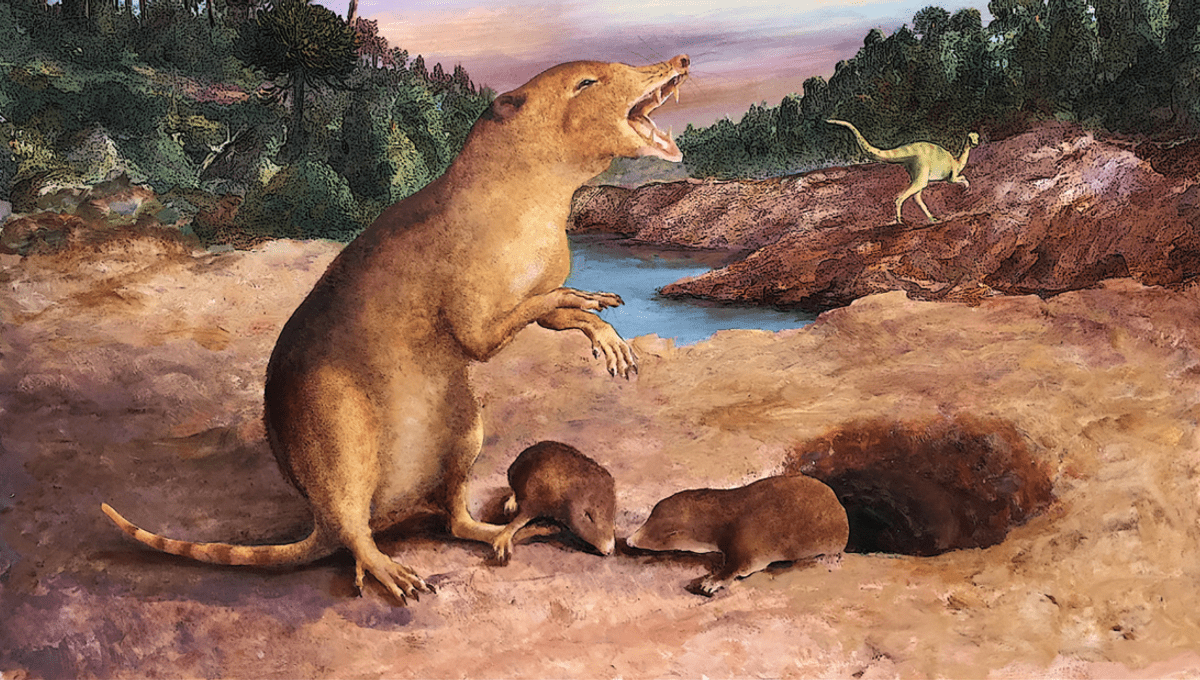
Brasilodon quadrangularis now takes the title of the world’s oldest (known) mammal species, thanks to investigations into its fossilized teeth. Confirmation of its mammalian status, and its emergence around 225.42 million years ago, put it 20 million years ahead of the runner-up mammal, Morganucodon. The teeth of the extinct and ancient shrew-like animal prove it was indeed a mammal, and that it dates back to the days of even the early dinosaurs.
In life, these animals were just 20 centimeters (7.9 inches) in length, but little of their bodies were left behind in the fossil record. Fortunately, mineralized bone does a good job of hanging around – and B. quadrangularis had two sets of teeth to throw into the mix, which reveal pivotal insights into its evolution.
“Comparative studies with recent mammal dentitions and tooth replacement modes suggest that this was a placental, relatively short-lived animal,” said Dr Martha Richter in a statement sent to IFLScience. Richter is a Scientific Associate at the Natural History Museum and senior author on a paper published to the Journal of Anatomy.
“Dated at 225.42 million years old, this is the oldest known mammal in the fossil record contributing to our understanding of the ecological landscape of this period and the evolution of modern mammals,” Richter continued.
That timeline indicates Brasilodon existed among the oldest known dinosaurs, though it’s expected they probably kept to themselves by living underground in burrows like modern shrews.
Beyond being the OG of the known extinct mammalian species, dental investigations also revealed fresh insights into the development of dentition among early mammals. Their toothy remains have revealed they were diphyodonty animals in having one set of replacement teeth that come in later in life, like us.
The process of growing teeth in the embryonic stage and then later shedding these for a final adult set is a key feature of mammals, compared to reptiles who regenerate teeth throughout their lives. Diphyodonty has been linked to other mammalian traits such as endothermy, live birth, and fur – so establishing Brasilodon as fitting in this category is a boon for the field.
“The evidence from how the dentition was built over developmental time is crucial and definitive to show that Brasilodons were mammals,” said Prof Moya Meredith Smith, contributing author and Emeritus Professor of Evolution and Development of Dentoskeletal Anatomy at King’s College London.
“Our paper raises the level of debate about what defines a mammal and shows that it was a much earlier time of origin in the fossil record than previously known.”
Source Link: Earliest Known Mammal Is Shrew That Burrowed Beneath Oldest Dinosaurs 225 Million Years Ago